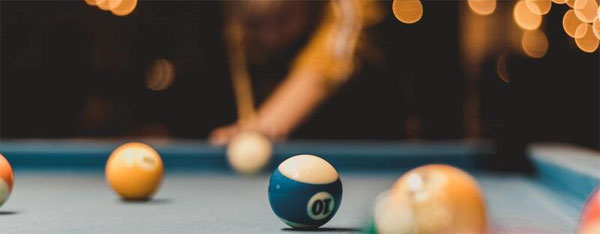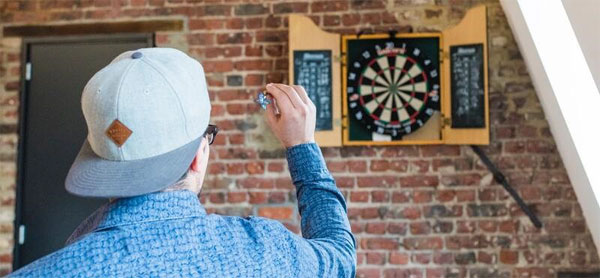Examining How Much it Costs to be a Pool Player
Beyond some ad-loaded mobile games, you’d struggle to play billiards without cost. Some pubs or bars are kind enough to offer a returnable deposit to use the cues with a small fee for playing on the table, but most go down the hourly booking route. From there, though, if you’re to take your billiards seriously, it’s certainly not cheap to get set up, or to test your skills against fellow enthusiasts.
Here, we’re delving into the costs of being a billiards player, from playing some pub pool to committing to the game for some true competition, as well as how it compares to some games in the same sort of arena.
4/29/2022 2:20:00 AM
Examining How Much it Costs to be a Pool Player

Source: Unsplash
The cost of playing billiards isn’t cheap
Billiards tables, cues, and equipment certainly aren’t cheap to buy or maintain, so it’s not surprising that playing the game is quite expensive. In any given dedicated pool hall, you’re likely looking at paying between $10 to $15 for one hour of play, but some single-table venues like bars offer cheaper, per-game rates and cue renting. On the other hand, some dedicated venues offer potentially cost-cutting memberships, from around $50 to $150 per month or sometimes even per week.
If you want to ramp up your play and get in some games as and when you see fit, you may turn to get your own billiards table. There are gimmicky small billiards tables that you can buy on the cheap from novelty stores, but for the real deal at seven, eight, or nine feet, made of wood with adjustable feet, you’re likely looking at upwards of $2000. You may be able to cut that down to $1000 if you look in the right places, though, especially if you’re willing to shave a few inches off of the table size.
Even if you don’t want to go all-in on getting a proper pool table, but do want to dedicate yourself to the game a bit more, cues and accessory sets aren’t cheap either. You can get help narrowing down on the exact brand of cue that would suit you, but generally speaking, you’re looking at around $300 for a full set. Taking the Spencer Marston kit as an example, which includes balls, frames, table cleaning accessories, a few cues, chalk, a guide, and more, you do get high-quality goods, but the cost is $350.
If you’re thinking of testing your skills in competitions, you can usually find fairly local meets or leagues that balance out to around $10 or $20 per meet. Stepping into the national competitions will cost significantly more, though, with entre fees for non-champion players to the US Open 9-Ball Championship being $1000, with a non-refundable deposit of $250. It’s a lot of money, and you’ll need to travel across the country to stay at the designated venues. So, it starts as a fairly cheap pay-per-play game but getting serious ramps up the costs.
Billiards costs by comparison to other games

Source: Pexels
Billiards, as a form of gaming, is quite expensive overall, but its baseline pay-per-play system is one that’s repeated across many other popular game types. As you’d assume, in the realms of online slot gaming, the emphasis is the same: you pay-per-play, putting in coins each time you spin. However, to make the games more accessible, a new platform that features an extensive library of popular titles was launched, offering the chance to play for free. This gets more people playing and, for some, becoming real-money players.
The big-name slot games like Cleopatra, China Shores, and Lucky Larry’s Lobstermania 2 are all there for free play, but to play them for free, you need a compatible device. For modern online slot games via the internet or an app, you just need a modern laptop (around $300) or a smartphone with an operating system from at least the last eight years – such as iOS 8, which came with iPhone 6 models and currently cost upwards of $150. So, while the games are free, you do need expensive hardware to play, as well as pay-per-play in slots tournaments for real money.
Naturally, standing slot machines found in some pool venues are always per-per-play but never require the player to pay for the hardware. Stepping across the bar, you’ll also likely see a darts board. These usually operate in a similar way to billiards, with you needing to pay a small deposit – maybe $5 – for darts or pay for an hour slot. If you then want your own darts board, you’re looking at around $70 unless you want a full electronic or arcade unit ($600 to $3500). Darts themselves will set you back around $25, and then memberships and tournament play at the entry to professional level can be around $600 each.
When compared to these other games that often appear within a few feet of a billiards table in bars, billiards looks to essentially follow the status quo, while requiring a bit more premium gear – especially if you want your very own table.
Examining How Much it Costs to be a Pool Player
Examining How Much it Costs to be a Pool Player
- Title: Examining How Much it Costs to be a Pool Player
- Author: billiardsforum (Billiards Forum)
- Published: 4/29/2022 2:20:00 AM
- Last Updated: 4/29/2022 2:50:41 AM
- Last Updated By: billiardsforum
